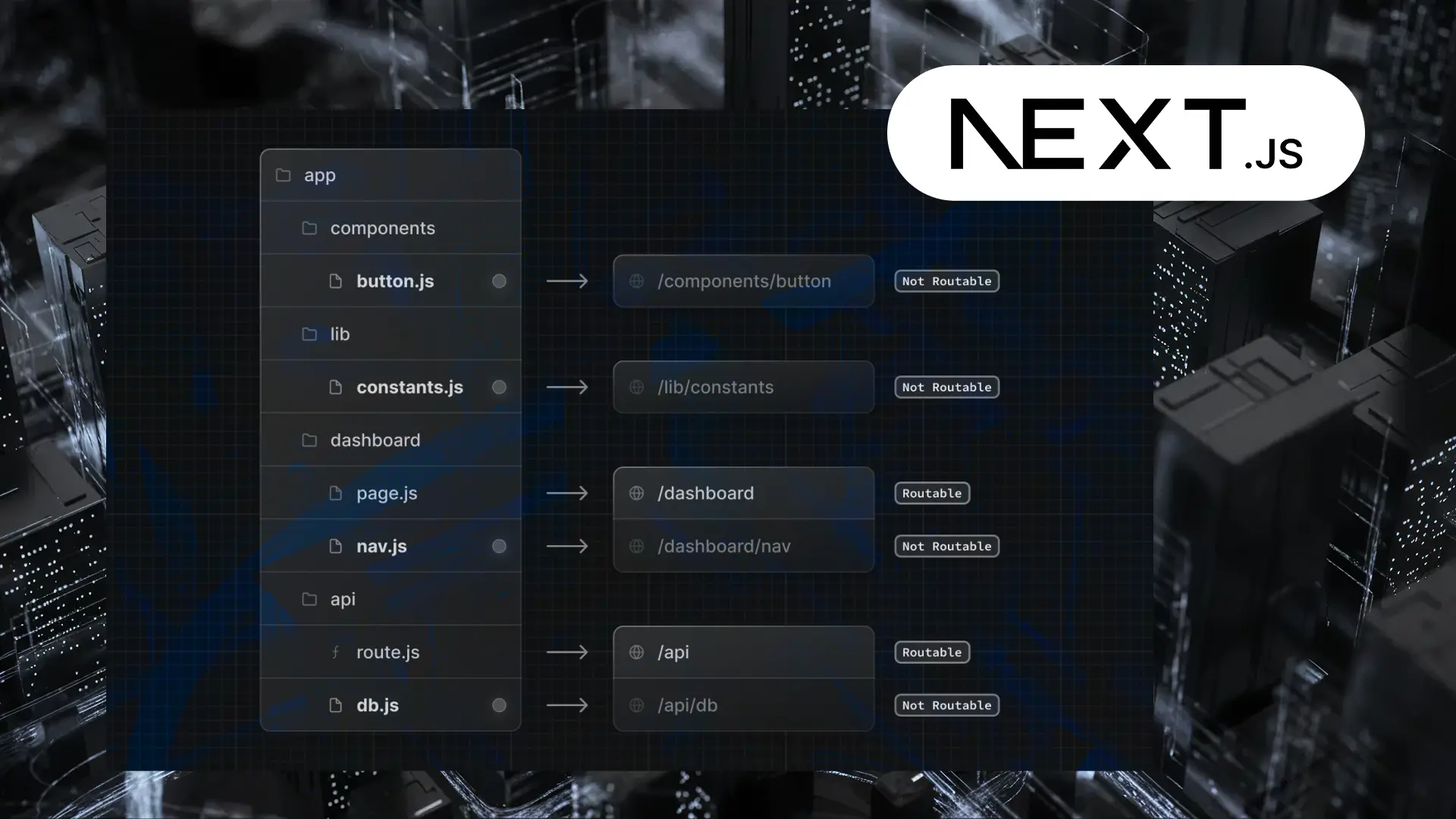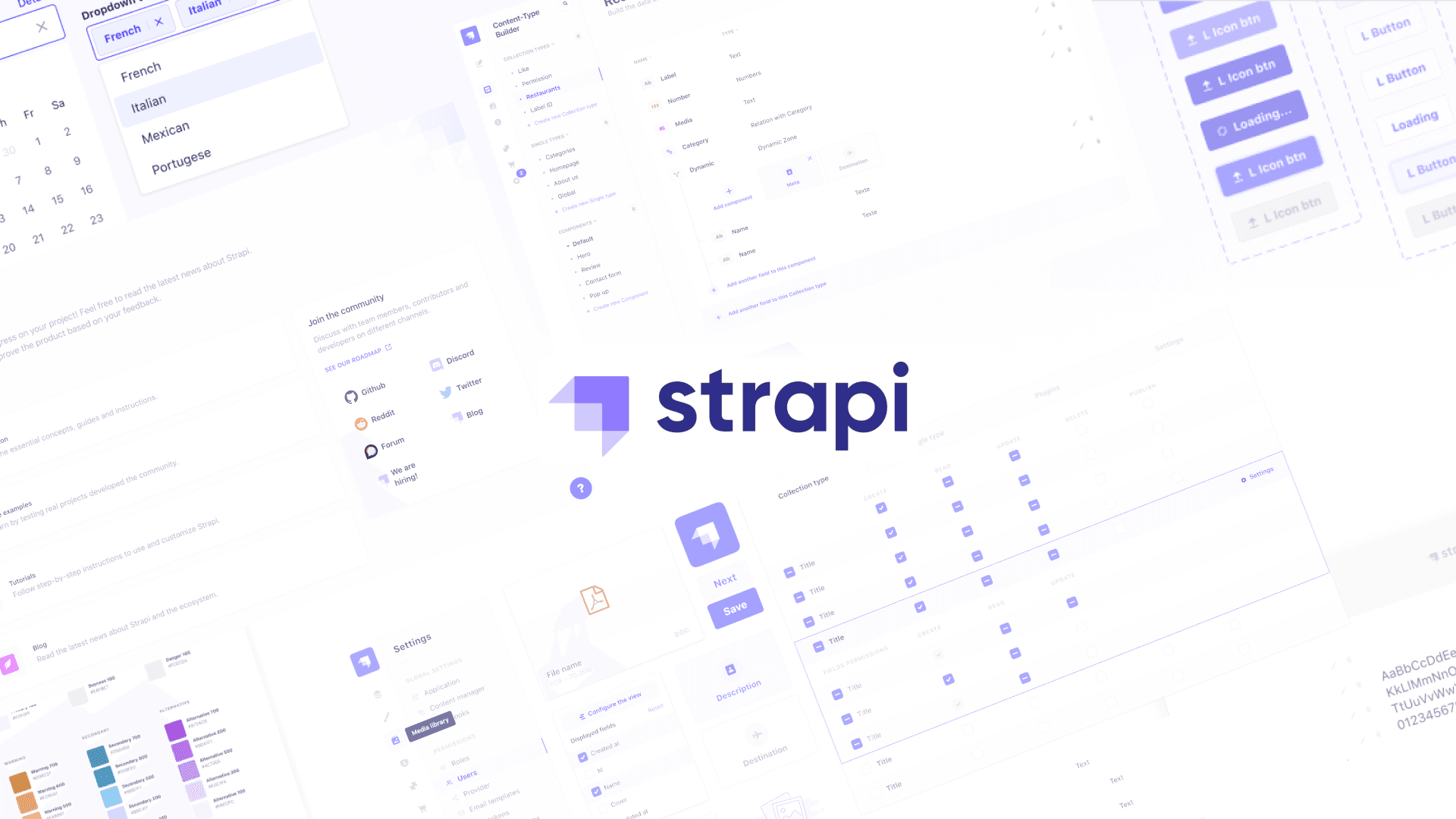Table of Contents
10 Best Node.js Libraries and Packages in 2025
Author

Subject Matter Expert

Date

Book a call
Backend performance does not break products—it breaks businesses.
As applications scale and user demands rise, backend teams face mounting pressure to build secure, high-performance systems—at speed. Node.js, with more than 2.2 million packages on npm, continues to power industry leaders like Netflix, LinkedIn, and Uber. But with such an extensive ecosystem, the real challenge lies not in availability but in making the right choice.
In 2025, the pace of innovation in Node.js is accelerating. From AI-powered features and real-time communication to secure authentication and performance-first caching, the right library can reduce development time significantly—or silently introduce risk and technical debt. Developers must weigh trade-offs between speed, flexibility, scalability, and long-term stability.
This blog helps you cut through the clutter. Backed by expert insights and real-world usage, we have curated the 10 most essential Node.js libraries and packages for 2025. Whether you are building a live chat app, integrating AI, managing user authentication, or improving backend workflows, this guide will help you:
- Streamline integration decisions
- Optimize backend performance
- Make scalable, future-proof tech choices
Let us explore the libraries that are defining the next chapter of backend development.
What Makes Node.js a Backend Powerhouse
Node.js brought JavaScript to the server side—and redefined backend development in the process. Built on Google’s V8 engine, its event-driven, non-blocking architecture enables high concurrency, low latency, and efficient handling of real-time data streams. This makes it a top choice for developers building scalable, high-performance applications.
Why Node.js Will Still Lead in 2025
Node.js is not a trend—it is infrastructure. Its single-threaded model, vast npm ecosystem, and cross-platform capabilities make it highly adaptable across industries. In 2025, it continues to dominate backend workflows for applications that demand speed, responsiveness, and reliability.
Industry Adoption Highlights
- Netflix uses Node.js to reduce load times and optimize streaming for over 230 million users.
- LinkedIn rebuilt its mobile backend on Node.js, cutting resource consumption and doubling throughput.
- PayPal migrated from Java to Node.js, improving performance and developer efficiency across teams.
Why Libraries Matter
Node.js alone is powerful, but its true strength lies in its ecosystem. With over 2 million packages available on npm, developers can tap into prebuilt, well-maintained libraries that streamline tasks such as authentication, caching, real-time communication, and AI integration.
In fast-paced environments where development speed and scalability are critical, the right library is not optional—it is foundational.
Top 10 Node.js Libraries and Packages in 2025
Choosing the right library is a critical decision that directly impacts your application’s performance, scalability, and long-term maintainability. At GeekyAnts, we have implemented these libraries across a wide range of real-world projects. This curated selection reflects both hands-on experience and deep technical evaluation, giving you a reliable foundation to build secure, efficient backend systems in 2025.
1. Bcrypt
About
Bcrypt is the de facto password-hashing library for Node.js. It ensures secure password storage and protection against brute-force attacks by generating salted and hashed outputs for each password.
Features
- Automatic per-Password salt
- Fixed-length opaque 60-character hash
- Adjustable cost factor
- Sync and async support
- Cross-platform support
Pros
Proven, industry-standard security. Salt generation is built-in. Tunable work factor for future-proof security. Easy API for hashing and comparison.
Cons
Slower than bcryptjs (approx. 30% slower). Native C++ bindings may fail to build on certain platforms (like Windows).
When to Use It
Use bcrypt for hashing user passwords in login/signup flows, especially when security outweighs raw performance. It is not suitable for general-purpose encryption or storing non-password data.

2. Socket.IO
About
Socket.IO enables real-time, event-based, bidirectional communication between servers and clients.
Features
- Fallback to long-polling or WebTransport
- Rooms and namespaces
- Auto-reconnect
- Acknowledgements
- Group broadcasting
- Horizontal scaling
Pros
Low-latency communication. Unified API for multiple platforms. Built-in fallback for reliability. Strong ecosystem and community.
Cons
Higher protocol overhead compared to raw WebSockets. Complexity introduced by fallback mechanisms. Limited to Node.js environments.
When to Use It
Choose Socket.IO when your app requires reliable real-time features like chats, collaborative editors, or live dashboards where latency and message delivery matter.

3. OpenAI
About
The OpenAI library connects Node.js applications to AI models such as GPT, Codex, and DALL·E.
Features
- Multi-modal output support
- Access to advanced OpenAI models
- Prompt engineering and fine-tuning options
Pros
High-performance AI features. Easy API integration. Versatile for chatbots, summarization, and automation.
Cons
Can be expensive for high usage. Possibility of hallucinated results. Ethical considerations. No access to internal logic.
When to Use It
Best suited for apps needing AI capabilities like natural language interfaces, content generation, or code suggestions.

4. Passport
About
Passport is a flexible and minimal authentication middleware with over 500 supported strategies.
Features
- OAuth, JWT, SAML support
- Session management
- Modular and extensible
- Persistent login
Pros
Quick setup. Support for a wide range of strategies. Lightweight design. Large community.
Cons
Can become complex with multiple auth flows. Requires strong security management. Doesn’t enforce policies.
When to Use It
Ideal for applications needing support for multiple login options—like social logins or enterprise auth—offering flexibility for future scaling.

5. Axios
About
Axios is a promise-based HTTP client that simplifies RESTful requests.
Features
- Interceptors for requests/responses
- Request cancellation
- Automatic JSON handling
- Configurable settings
- Cross-platform support
Pros
Clean syntax. Works in both Node.js and browser. Supports chaining and interceptors.
Cons
Slightly heavier than fetch. Requires boilerplate in complex setups.
When to Use It
Use Axios for sending HTTP requests, handling JSON, and customizing request flows in client-server interactions.

6. Jest
About
Jest is a feature-rich testing framework optimized for unit, integration, and snapshot testing.
Features
- Zero-config setup
- Parallel test execution
- Mocking, spying, assertions
- Snapshot testing
- Code coverage
Pros
Fast to get started. Excellent async support. Strong community and tools.
Cons
Needs config for advanced use. May slow down with large test suites.
When to Use It
Perfect for testing backend services, APIs, and full-stack apps with fast, repeatable test cases and reliable coverage.

7. Mongoose
About
Mongoose adds schema-based modeling to MongoDB in Node.js.
Features
- Schema definition and validation
- Middleware support
- Chained queries
- Document population
- Async/await and Promises
Pros
Adds structure and validation. Rich plugin support. Simplifies MongoDB logic.
Cons
Abstraction over native driver. Complex queries can be tricky. Learning curve for advanced features.
When to Use It
Use when you need structured data and want to enforce schema rules while working with MongoDB for easier maintenance.

8. Nodemailer
About
Nodemailer enables sending emails from Node.js applications.
Features
- SMTP, SES, sendmail support
- HTML and text emails
- Attachments
- Custom config
- Logging and error handling
Pros
Easy to set up. Supports various transports. Rich formatting and attachments. Good docs.
Cons
No email receiving. Needs setup for production. Some transports require dependencies.
When to Use It
Use Nodemailer for transactional emails, user notifications, signup confirmations, and reports from your backend.

9. cache-manager
About
cache-manager offers a flexible, unified caching API for various storage engines.
Features
- Pluggable stores (memory, Redis, etc.)
- TTL configuration
- Async support
- Multi-level caching strategies
Pros
Works with multiple caching engines. Improves app performance. Easy to use.
Cons
Adds abstraction. Multi-layer setups may be complex.
When to Use It
Great for caching API responses or database results in apps that need better performance and scalability, especially read-heavy ones.

10. cookie-parser
About
cookie-parser is middleware that parses cookies from incoming requests in Express.
Features
- Express integration
- Key-value parsing
- Signed cookie support
Pros
Lightweight and fast. Simple cookie access API. Supports signing.
Cons
Doesn't handle encryption or session logic. Only parses cookies.
When to Use It
Use cookie-parser in Express apps for simple cookie tracking, personalization, or lightweight session handling.

Best Practices to Follow While Using NPM Packages
The Node.js ecosystem offers unmatched flexibility through its vast npm registry, but this freedom also introduces potential risks. From outdated dependencies to unverified packages, even a single misstep can compromise your app’s performance or security.
Here are key best practices we recommend to ensure you have chosen, integrated, and maintained npm packages safely and efficiently:
1. Verify Package Credibility
Always evaluate a package’s reputation before installing it:
- Check weekly download stats on npmjs.com
- Look at GitHub activity—frequency of commits, issue resolution, and pull request handling
- Review the number of contributors and community engagement
Packages with active maintenance, strong community support, and transparent versioning are far more reliable.
2. Read the Documentation
Good documentation is a sign of quality. Ensure the package:
- Clearly explains how to install and use it
- Details compatibility, configuration options, and limitations
- Covers common use cases and examples
Poor or outdated docs often reflect the state of the code itself.
3. Check for Known Vulnerabilities
Use tools like:
- npm audit
- Snyk
- GitHub Dependabot
These help identify security vulnerabilities in dependencies—especially in transitive (nested) packages you may not be aware of.
4. Avoid Over-Reliance on Micro-Packages
Installing a separate package for every small utility increases your dependency surface and build complexity. Prefer established utility libraries (like Lodash) over fragmented alternatives.
5. Lock Dependencies for Production
Use a lockfile (package-lock.json or yarn.lock) to ensure consistent dependency versions across environments. This reduces surprises in CI/CD pipelines or cloud deployments.
6. Regularly Audit and Update
Outdated packages can lead to performance issues, compatibility conflicts, or security flaws. Establish a monthly or sprint-based routine to:
- Review changelogs
- Apply safe updates
- Replace deprecated packages
7. Limit Use of Unmaintained or Obscure Packages
If a package hasn’t been updated in over a year or has open issues piling up with no response, it’s a red flag. Look for modern, well-supported alternatives.
8. Test Before You Trust
Even trusted packages can introduce unexpected behavior. Set up sandbox environments to test how a package integrates with your existing stack before rolling it out in production.
Conclusion
Node.js continues to power some of the most demanding applications in the world—and its real strength lies in the ecosystem of libraries that support it. The right tools not only improve development speed but also enhance performance, reliability, and long-term maintainability. Each library in this list has been carefully selected based on real-world use, technical depth, and future relevance.
At GeekyAnts, we use these libraries across large-scale products and enterprise systems, ensuring clean architectures and efficient delivery. Whether you are scaling an existing app or starting fresh, our team can help you make the right decisions from day one.
Partner with GeekyAnts to build fast, secure, and future-ready backend systems.
FAQs
1. How many Node.js libraries are there?
As of 2025, the npm registry hosts over 2.2 million Node.js packages. While not all are actively maintained or production-ready, thousands are widely used across real-world applications and are regularly updated by the open-source community.
2. What is the difference between the Node.js library and the framework?
A Node.js library provides specific functionality—such as password hashing, HTTP requests, or testing—that you integrate as needed. A framework, on the other hand, offers a predefined structure and controls parts of your application flow. In short, libraries give you tools; frameworks give you a foundation.
3. What are NPM libraries?
NPM libraries are reusable JavaScript packages hosted on the Node Package Manager (npm) platform. These packages help developers add functionality—like routing, authentication, or data validation—without writing everything from scratch. They are installed and managed via the npm CLI in Node.js projects.
4. Which are the best Node.js libraries for machine learning?
Some of the most effective machine learning libraries for Node.js include brain.js for neural networks, tensorflow.js for deep learning tasks, ml.js for statistical operations, and onnxruntime-node for running pre-trained ONNX models. These libraries are useful for integrating ML capabilities into Node-based environments.
5. Which are the most used Node.js libraries?
Popular Node.js libraries include Express for server-side routing, Axios for handling HTTP requests, Mongoose for MongoDB integration, Jest for testing, Lodash for utility functions, and bcrypt for password hashing. These tools are common across projects of all sizes and industries.
6. Does Node.js offer the same performance benefits when using libraries, too?
Yes—when chosen carefully, Node.js libraries can enhance performance by reducing development overhead and handling tasks efficiently. However, using outdated or bloated packages can introduce latency or security risks. Always evaluate a package’s footprint and reliability before integrating it into production.
7. How to find the best NPM packages?
Start by reviewing download stats, GitHub activity, and the documentation quality of a package. Tools like npms.io, npm trends, and libraries.io can help you compare popularity and maintenance status. Also, check the issue tracker to assess how responsive the maintainers are.
8. How do NPM packages work?
NPM packages are installed into your project using the npm install command. They are listed in the package.json file and can be imported into your application code. These packages expose functions or modules that extend your app’s capabilities, making development faster and more modular.
Dive deep into our research and insights. In our articles and blogs, we explore topics on design, how it relates to development, and impact of various trends to businesses.





